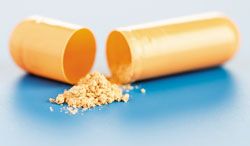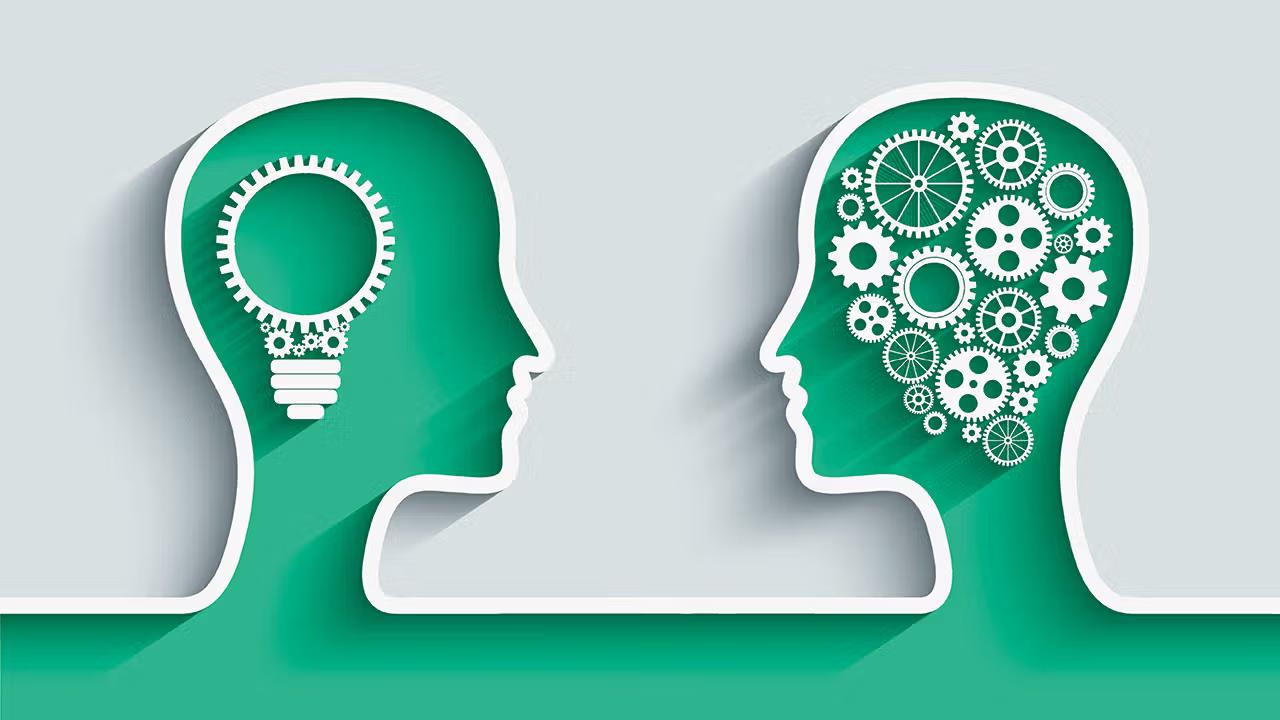News
Article
Pharmaceutical Technology
Certifying Excipient cGMPs
Author(s):
As EU supplier risk assessment deadlines approach, a number of voluntary third-party auditing and certification options are available. Will more excipient suppliers, and drug manufacturers, use them?
WLADIMIR BULGAR/Getty Images

Once upon a time, excipients were considered mere “fillers,” necessary for drug formulation. Even though they make up most of any pharmaceutical formulation, they were not included in original pharmaceutical current good manufacturing practices (cGMP) regulations. The past few years, however, have brought increased awareness of how important their quality is to patient safety.
Both the European Union’s (EU’s) Falsified Medicines Directive (FMD) and the United States FDA Safety and Innovation Act (FDASIA) require that drug manufacturers verify that their excipients are made according to cGMPs. In March 2015, the EU updated its guidance on excipient cGMPs, requiring systems for tracing starting materials, intermediates and excipients, and identifying risks all along the supply chain. The FMD set a deadline of March 2016 for performing supplier risk assessments.
For years, excipient cGMP requirements were set forth in guidance published by the International Pharmaceutical Excipients Council (IPEC). At this point, three countries have established cGMP regulations for excipients, and a number of standards have been set, most recently, the American National Standards Institute’s (ANSI’s) 363, launched in March 2015, which involved the efforts of IPEC, NSF International and a group of industry representatives and independent experts; the EXCiPACT GMP standard, and the EXCiPACT GDP standard (published as an annex to the International Standard Organization’s [ISO] 9001:2008).
Given the cost of auditing suppliers, regulators in the United States and Europe have encouraged manufacturers to work with third-party auditors to certify that they are using raw materials that meet cGMPs.
Options include:
- The US Pharmacopeial Convention’s (USP’s) excipient verification program, launched in 2006
- EXCiPACT asbl’s certification scheme, established by IPEC, the European Association of Chemical Distributors (FECC) and the United Kingdom’s Pharmaceutical Quality Group (PQG)
- NSF International’s program, enabled by the acquisition of International Pharmaceutical Excipient Auditing (IPEA), IPEC’s inspection and certification authority, in 2013, and certified against ANSI 363
- RX-360’s program, which uses various standards and the auditing services of BSI Supply Chain Solutions.
Pharmaceutical Technology interviewed directors of these programs to get some idea of how the programs work and what sets each of them apart. Here is some of what they had to say.
John Atwater, Senior director, USP’s Excipient Verification Programs, Auditing and Certification ProgramPharmTech: When did USP establish its program for excipients verification and how does it work?
Atwater: We established the excipient verification program in 2006. It includes a triennial onsite GMP audit for compliance to USP general chapter <1078>, GMPs for Bulk Pharmaceutical Excipients. It also includes a thorough review of chemistry, manufacturing and control (CMC) product documentation, and lab testing of product samples for conformance to standards in the United States Pharmacopeia and National Formulary (USP–NF).
As we perform this work, we come up with observations that companies must correct. Once they do, they are awarded a certificate of standards compliance, and the use of the USP excipient verified mark to use on their bulk labels and certificates of analysis. We have similar programs for APIs and dietary supplements. We also offer an excipient supplier qualification program, a truncated version of the verification program that we launched in 2008.
PharmTech: How long does it take for certification, and how long does that certification last?
Atwater: Certification generally lasts for up to three years. After initial verification, we perform continuous change- control monitoring and annual surveillance testing of samples that have been verified. It’s a continuous process of monitoring excipient quality.
PharmTech: How long does initial verification take?
Atwater: Generally it takes at least three months. Some companies can take up to a year to get through the program.
PharmTech: What is the cost of excipient certification?
Atwater: You’re typically looking at around $25,000-$30,000 for three years. Costs depend on the complexity of the excipient that is involved.
PharmTech: Today, there are many different routes to certification and auditing. What makes USP’s unique?
Atwater: Our program involves both the GMP audit and product documentation review and testing. For instance, we expect participants to provide complete CMC documentation, in the form of the International Council for Harmonization’s (ICH’s) Common Technical Document.
Patty Benson Co-chair, Audit Operations Group, Rx360, and director of quality operations, SAFC, USPharmTech: What are the major developments in Rx360’s auditing program?
Benson: Last year, we engaged BSI, one of the largest registrars in the world. The company is now the primary supplier of audits to us. When we get a request for a joint audit, it goes out to BSI, which is a third-party contractor to us.
PharmTech: What is a joint audit?
Benson: It refers to multiple manufacturers sponsoring an audit of one supplier. This approach benefits manufacturers by providing high quality audits while minimizing costs. It also benefits suppliers, since they only have to host one audit instead of several different ones.
PharmTech: How many pharmaceutical manufacturers have used your audit approach so far? How much does certification cost?
Benson: This year, we expect to complete around 100 audits. The figure for previous years has been in the 30-to-40 range.
The audit time varies based on the audit standard and the materials, or the supplier involved. The cost depends on the length of time it takes to do it plus the number of travel days involved, plus where BSI has auditors. Once the audit is completed, licensing costs $2500 for suppliers that are members of Rx360 and $5000 for non-members.
PharmTech: How many companies can share an audit?
Benson: In theory, a limitless number, but, in reality, most audits have an initial sponsorship of less than four. We use a database, in which a company enters a supplier and standard wanted for an audit. Other companies can look up this information and join the audit if they wish. This way, we match up sponsors who are looking at the same supplier. Once the audit is completed, anyone can license it.
For raw materials that are not excipients, we developed our own standard in 2011. We also have audit standards for APIs and packaging materials, and do supply chains security audits to review facilities, controls, and transportation. In addition, we’re working on some new standards including current good distribution practices (cGDPs), medical device standards, and an audit standard for contract labs.
Maxine Fritz, Executive vice-president, Pharma Biotech, NSF Health Services, NSF InternationalPharmTech: Can you tell us about ANSI-363?
Fritz: The standard has been a work in progress for several years. It was developed by NSF with IPEC, with a panel that included representatives from industry, regulatory bodies, and academia, so it went through a rigorous standard-setting process.
PharmTech: Given the different audit and certification models available, how does your approach differ?
Fritz: We are actually accredited by ANSI, which is recognized by global regulatory agencies worldwide.
PharmTech: Should standards for excipient cGMP compliance be mandatory in the future?
Fritz: The whole purpose of standards is to apply a consistent approach to regulating a certain part of the industry, depending on what it is. From an excipient perspective, the standard is the best way to get a consistent approach to regulation.
It can be very difficult for regulators to implement new regulations, so a voluntary standard is often a very good way to get industry in compliance without having to go through the years and years that are required to set a new regulation.
PharmTech: What do you see as the key areas where education and guidance are needed in excipient cGMP assessment?
Fritz: Suppliers need to get a better understanding of how their excipient products fit in for pharma applications. They also need to understand how much rigor to apply, based on how each particular product will be used.
For instance, you might have food-based sugars that are also used as pharma excipients. The quality requirements and type of manufacturing process might change based on how that excipient is used. In addition, end users need to have a better understanding of where their excipients are coming from.
Tony Scott, Consultant, EXCiPACTPharmTech: Where do you see the greatest vulnerability today in the pharma excipients supply chain?
Scott: The greatest potential vulnerability is the varying level of commitment and the resource availability from within national authorities and industry to inspect and audit suppliers for compliance with appropriate cGMPs. This is particularly true for Asian manufacturers and suppliers of APIs, excipients, and final dosage forms.
Pharma companies will strive to secure the information they are legally obliged to obtain from their suppliers and others, proportionate to their evaluation of the technical and commercial risks involved in their supply of a particular product. The pharma company has the ultimate legal responsibility in this regard. In higher risk cases, I would expect companies to complete an audit themselves or via an assured third party.
The supplier will be more willing to accept a customer audit if a strategic business relationship exists. Overall, the audit burden is increasing as a result of new regulations, and this can be reduced for both suppliers and their customers if the supplier becomes certified in ways acceptable to the regulators.
PharmTech: Can you please bring our readers up-to-date on new developments in the EXCiPACT program?
Scott: The EXCiPACT third-party certification scheme is picking up speed globally, especially in the US, China, and India, with over 20 registered suppliers.
PharmTech: What makes the program unique, and what does certification cost?
Scott: EXCiPACT asbl was created as a non-profit association in January 2014 with IPEC Europe, IPEC Americas, FECC and PQG as founding members, following a five-year development and a two-year pilot phase involving a team of over 40 industrialists and regulators.
Costs of certification vary, but participation typically costs 30,000 Euros over a three-year period; the savings for a supplier at 90,000 Euros over three years, and the savings for a pharma company at 180,000 Euros over three years, offering a total industry benefit of 240,000 Euros over three years.
The EXCiPACT standards (EXCiPACT GMP/GDP or NSF/IPEC/ANSI 363) underpin the EXCiPACT Certification Scheme, which can use all of the above standards within a comprehensive, quality-assured process leading to supplier certification. Suppliers have the choice of being audited against the ANSI standard or the ISO 9001 and the EXCiPACT standards in the EXCiPACT Certification Scheme.
PharmTech: What will be needed to get more pharmaceutical manufacturers to be proactive in managing and overseeing ingredients suppliers?
Scott: More pharma companies are becoming more proactive in managing their excipient suppliers when they see the business benefit from doing so. This has already happened with API suppliers, where strategic relationships are now the norm especially for patented products.
Given the present huge difference in the value of APIs compared to excipients, I don’t expect a major shift anytime soon, but I feel sure that the trend will develop when pharma companies realize the profit potential from strategically managing their excipient suppliers.
Article DetailsPharmaceutical Technology's APIs, Excipients, and Manufacturing Supplement
Vol. 39, No. 18
Pages: s14–s18
Citation:
When referring to this article, please cite it as A. Shanley, “Certifying Excipient cGMPs," Pharmaceutical Technology APIs, Excipients, and Manufacturing Supplement 39 (18) 2015.

Newsletter
Get the essential updates shaping the future of pharma manufacturing and compliance—subscribe today to Pharmaceutical Technology and never miss a breakthrough.





